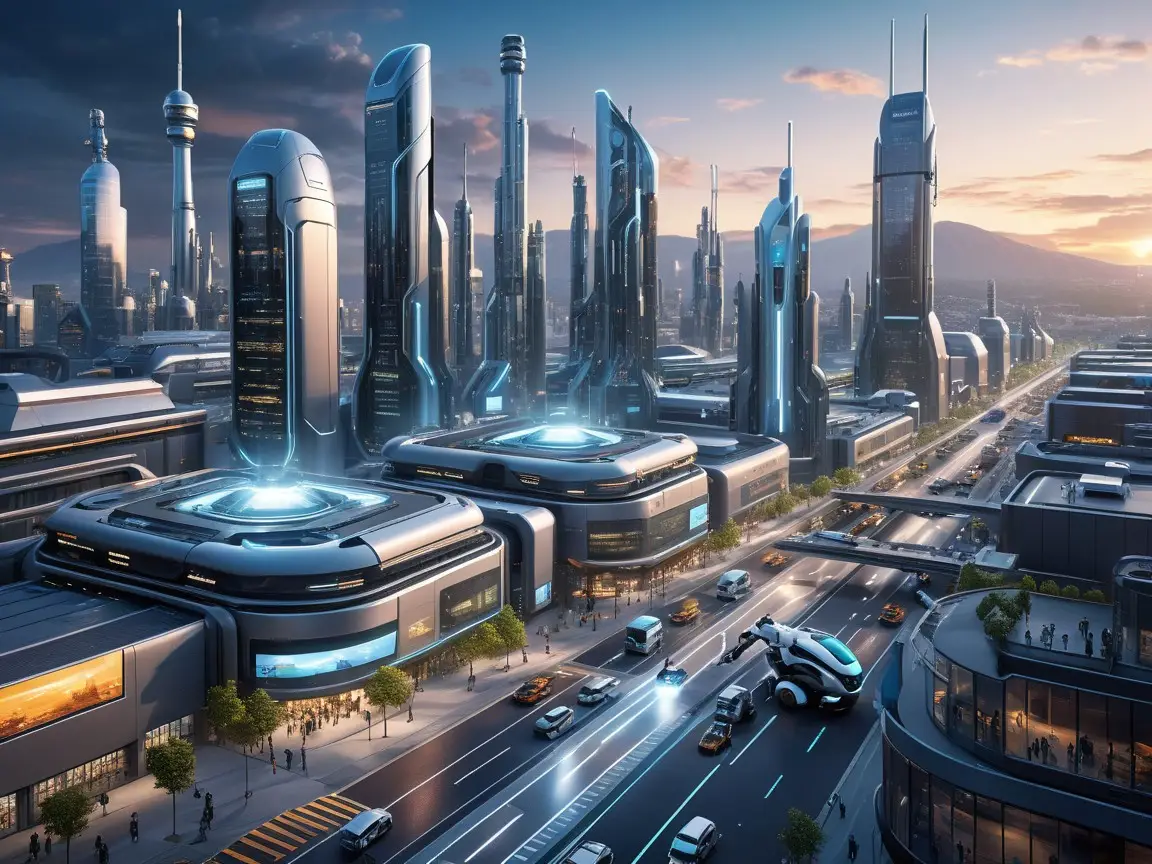Introduction:
Robotics is no longer a futuristic concept—it’s rapidly shaping industries, businesses, and even cities in ways that were unimaginable just a few years ago. As we move into 2024, robotics is evolving at a breakneck pace, bringing with it new trends, advancements, and possibilities. From AI-powered robots to the rise of collaborative robots (cobots) and robotic process automation (RPA), the future of robotics is full of exciting developments. In this post, we’ll explore the key trends in robotics, examine their impact on industries, and discuss how these innovations will transform our lives in the coming years. 🌍
1. Recent Advancements in Robotics Technology 🧠
AI and Machine Learning: The Brain Behind Modern Robots 🧠🤖
In 2024, one of the most significant advancements in robotics technology is the integration of Artificial Intelligence (AI) and machine learning. These technologies are enabling robots to do far more than simply follow programmed instructions—they are learning, adapting, and making decisions in real-time.
AI allows robots to perform tasks like data analysis, pattern recognition, and decision-making. For example, robots in manufacturing can now analyze production data to identify inefficiencies and adjust their tasks automatically to optimize performance. Machine learning algorithms help robots learn from their environments and improve over time, making them smarter and more adaptable.
- AI-Driven Automation: Robotics is becoming smarter through the application of AI in tasks such as sorting, packaging, and logistics. This not only speeds up processes but also improves accuracy, reducing human error.
- Enhanced Vision Systems: Robots are now equipped with advanced computer vision systems that enable them to recognize objects, navigate dynamic environments, and even interact with humans in a safe and efficient manner.
2. The Rise of Collaborative Robots (Cobots) in Industries 🤝🤖
What Are Cobots?
Collaborative robots, or cobots, are robots designed to work safely alongside humans in a shared workspace. Unlike traditional industrial robots, which are often separated by safety barriers, cobots are equipped with sensors and AI to ensure they can interact with human workers safely.
Cobots are not here to replace human workers—they are designed to enhance productivity by automating repetitive or dangerous tasks, while allowing humans to focus on more complex and value-added activities. In 2024, cobots are gaining traction in various industries, including manufacturing, healthcare, and logistics.
Why Cobots Are Gaining Popularity 🚀
- Safety and Efficiency: Cobots work safely around humans, making them ideal for industries where human workers and machines share a space. For example, in an assembly line, a cobot might handle the heavy lifting while a human worker focuses on more intricate tasks.
- Cost-Effectiveness: Cobots are more affordable and easier to implement than traditional robots, making them accessible to small and medium-sized businesses.
- Flexibility: Cobots can quickly be reprogrammed to handle different tasks, offering businesses greater flexibility in their operations.
3. Robotic Process Automation (RPA) in Business 🏢🤖
What is Robotic Process Automation?
Robotic Process Automation (RPA) is revolutionizing business operations by automating repetitive, time-consuming tasks. From data entry to invoicing and even customer service, RPA is reducing the need for human intervention in routine processes. This allows businesses to focus on more strategic initiatives while improving efficiency and accuracy.
Key RPA Applications in Business
- Customer Service: AI-powered chatbots and virtual assistants are transforming customer service departments by handling inquiries and solving problems autonomously.
- Finance and Accounting: RPA tools are used to automate tasks such as data entry, invoice processing, and financial reporting, improving speed and reducing errors.
- Human Resources: From recruitment to payroll, RPA is streamlining HR processes, ensuring that businesses can handle these functions more efficiently.
The future of RPA is about more than just automating repetitive tasks. In 2024, RPA will increasingly be used to optimize entire workflows, making organizations more agile and responsive.
4. The Role of Robotics in Smart Cities 🌆🤖
Robotics in Urban Development and Infrastructure 🏙️
As the world moves toward smarter cities, robotics will play a crucial role in shaping urban environments. In 2024, robots will help tackle some of the most pressing challenges faced by cities, including traffic congestion, waste management, and public safety.
- Robotic Waste Management: Autonomous robots can help cities manage waste more effectively by sorting and collecting garbage without the need for human workers. This reduces labor costs and enhances recycling efforts.
- Traffic Management: Drones and robots equipped with sensors will monitor traffic conditions, provide real-time data, and help manage traffic flow in busy urban areas.
- Public Safety: Drones and autonomous robots will also be deployed in security and surveillance tasks, helping to maintain public safety and monitor areas that may be difficult for human patrols to access.
Smart Cities and the Future of Robotics
Robots in smart cities will work in tandem with other technologies, such as Internet of Things (IoT) devices and big data analytics, to create more sustainable, efficient, and livable urban environments. Cities like Singapore and Dubai are already experimenting with robotics technologies, with autonomous vehicles, drones, and robots deployed for various public services.
Conclusion:
The future of robotics is incredibly exciting. With AI, machine learning, cobots, and robotic process automation continuing to evolve, we are on the cusp of a new era in which robots and humans work side-by-side to create more efficient, productive, and sustainable environments. Whether in factories, businesses, or cities, robotics is already having a profound impact—and we’ve only just begun to scratch the surface.
As we look ahead to 2024 and beyond, the trends we’ve discussed will continue to redefine the way we live and work. For engineers, businesses, and governments, the key to staying ahead will be to embrace these emerging technologies and adapt to the rapidly changing world of robotics. 🚀
Internal Links
External Links
- Learn more about AI-powered robotics.
- Explore smart city innovations.

